Carpentry SWMS: Ensuring Safety and Compliance in the Construction Industry
A detailed guide to creating and implementing a carpentry SWMS for safer, compliant construction worksites.
Carpentry is one of the most fundamental trades within the construction industry. Carpenters are involved in a wide range of activities, from framework and formwork to finishing, roofing, and fit-outs. While essential, carpentry tasks are also inherently high risk. Working with power tools, elevated structures, heavy materials, and often within dynamic environments, carpenters face numerous hazards daily.
To manage these risks effectively, Australian legislation requires the use of Safe Work Method Statements (SWMS) for high-risk construction work. A carpentry SWMS provides a structured, documented process to identify hazards, assess risks, and establish safe work practices. It is not only a compliance requirement but also a practical tool for protecting workers, contractors, and the public.
In this article, we will explore what carpentry SWMS are, why they are important, their legal requirements, what they should include, and best practices for implementation across the construction industry.
Understanding SWMS
A Safe Work Method Statement (SWMS) is a document that sets out:
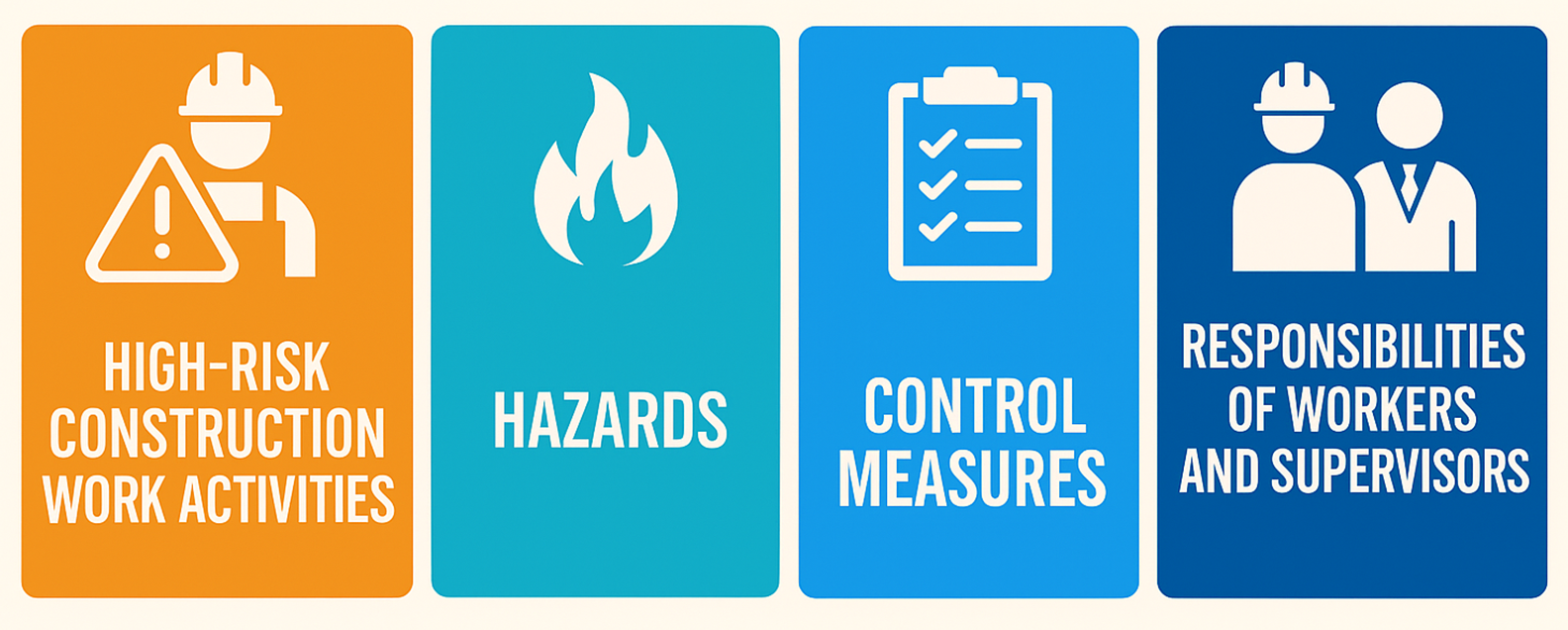
- The high-risk construction work activities being undertaken.
- The hazards associated with those activities.
- The control measures to be implemented to manage risks.
- The responsibilities of workers and supervisors in maintaining safe practices.
In Australia, SWMS are required for 18 categories of high-risk construction work as defined under the Work Health and Safety (WHS) Regulations.
Carpentry work often falls into multiple high-risk categories, such as:
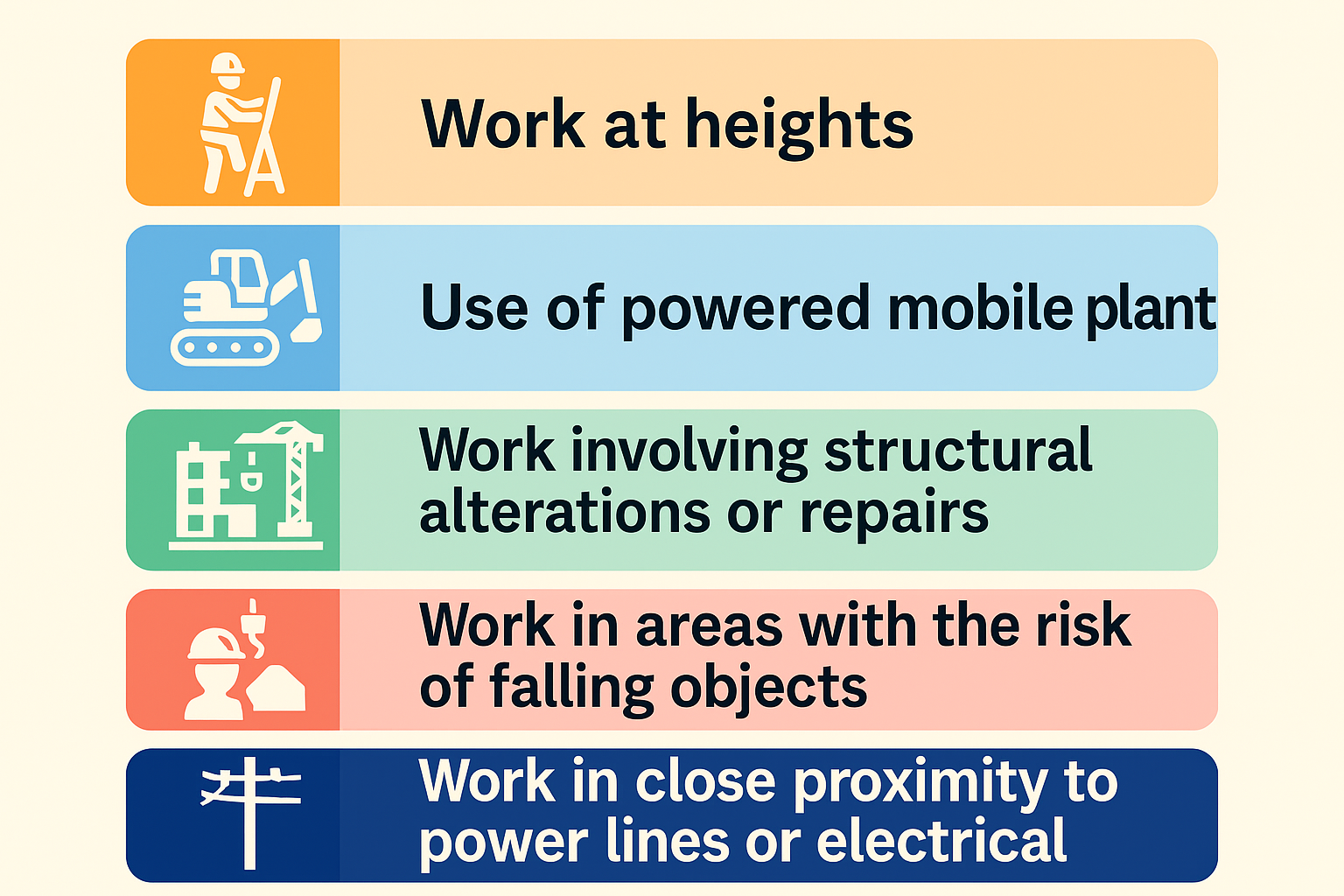
This makes a carpentry SWMS an essential document on construction sites.
Why Carpentry SWMS is Important
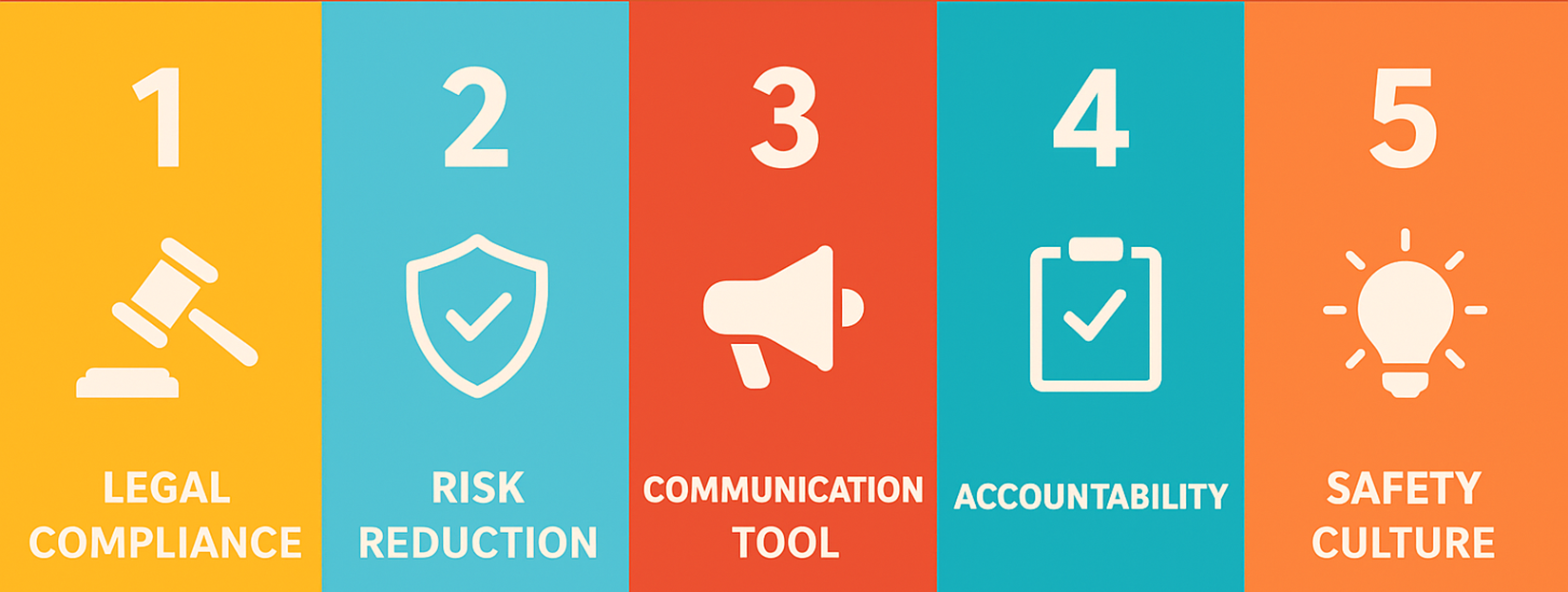
1. Legal Compliance
Failure to prepare and follow a SWMS can result in heavy penalties, project delays, or even site shutdowns. It is a legal requirement for high-risk construction work.
2. Risk Reduction
Carpenters regularly use saws, nail guns, scaffolds, and ladders. SWMS ensures risks such as cuts, falls, or equipment malfunctions are identified and managed proactively.
3. Communication Tool
A SWMS provides a clear communication framework between supervisors, workers, and subcontractors. Everyone understands the hazards and the agreed safety measures.
4. Accountability
Documented procedures assign responsibility for implementing controls. This helps ensure that supervisors and workers follow through on agreed actions.
5. Safety Culture
Consistently using SWMS reinforces a culture where safety is prioritised alongside productivity.
Key Hazards in Carpentry Work
Carpentry involves a wide range of activities, each with specific hazards.
Some of the most common include:

- Manual Handling: Lifting, carrying, or installing heavy timber and panels can cause musculoskeletal injuries.
- Falls from Heights: Roofing, framing, and elevated work platforms expose workers to fall risks.
- Cuts and Punctures: Sharp tools, saw blades, and nail guns present high injury potential.
- Noise and Vibration: Prolonged use of power tools can lead to hearing loss and hand-arm vibration syndrome.
- Falling Objects: Tools, timber, or materials can strike workers below.
- Electrical Hazards: Power tools connected to electricity may cause shocks or fires if not managed correctly.
Identifying these hazards is the first step in building an effective SWMS.
What Should a Carpentry SWMS Include?

A well-prepared SWMS should cover:
- Scope of Work
- A description of carpentry tasks (e.g., framework, cladding, formwork).
- Hazard Identification
- List all potential hazards associated with the work.
- Risk Assessment
- Rate risks based on likelihood and consequence.
- Roles and Responsibilities
- Assign responsibilities to supervisors, safety officers, and workers.
- Emergency Procedures
- Steps to follow in case of incidents such as falls, electrical shocks, or serious cuts.
- Review Process
- Regular reviews, especially when conditions change, new tools are introduced, or incidents occur.
Best Practices for Implementing Carpentry SWMS

Engage Workers in Development
Carpenters who perform the tasks daily should be consulted. Their input ensures the SWMS is practical and not just theoretical.
Keep it Clear and Simple
Avoid complex jargon. Workers must be able to read and understand the document quickly.
Use Visuals
Tables, diagrams, and flowcharts make SWMS easier to interpret.
Train Workers
Every worker should receive a briefing on the SWMS before starting work. Induction and refresher training help maintain awareness.
Monitor Compliance
Supervisors must ensure workers are following the documented controls. Non-compliance should be addressed immediately.
Review and Update
SWMS should be living documents. Update them when hazards, equipment, or methods change.
Legal Requirements in Australia
Under the WHS Regulations, SWMS requirements include:
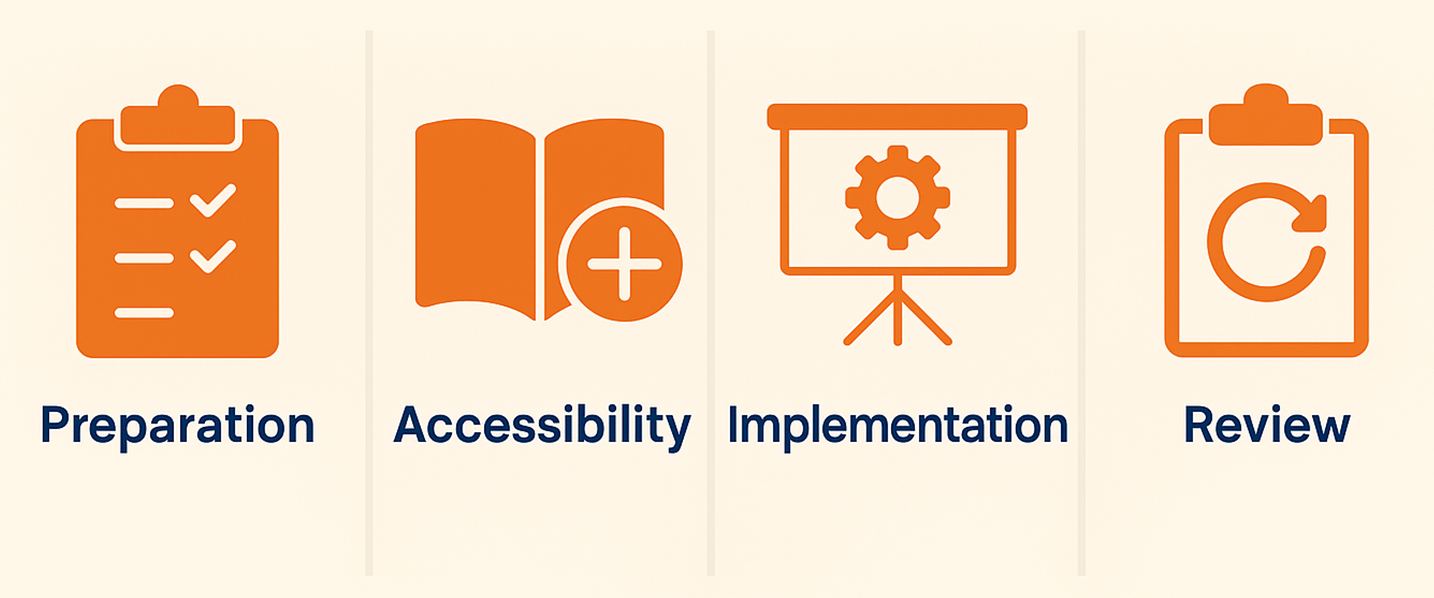
- Preparation: Must be developed before high-risk work starts.
- Accessibility: Must be readily available to workers and inspectors on site.
- Implementation: Work must be carried out in accordance with the SWMS.
- Review: Must be updated when the work environment changes or after an incident.
Regulators such as Safe Work Australia, SafeWork NSW, and WorkSafe Victoria provide guidance and sample templates.
Technology in SWMS
Modern digital tools make preparing, sharing, and managing SWMS easier. Features include:
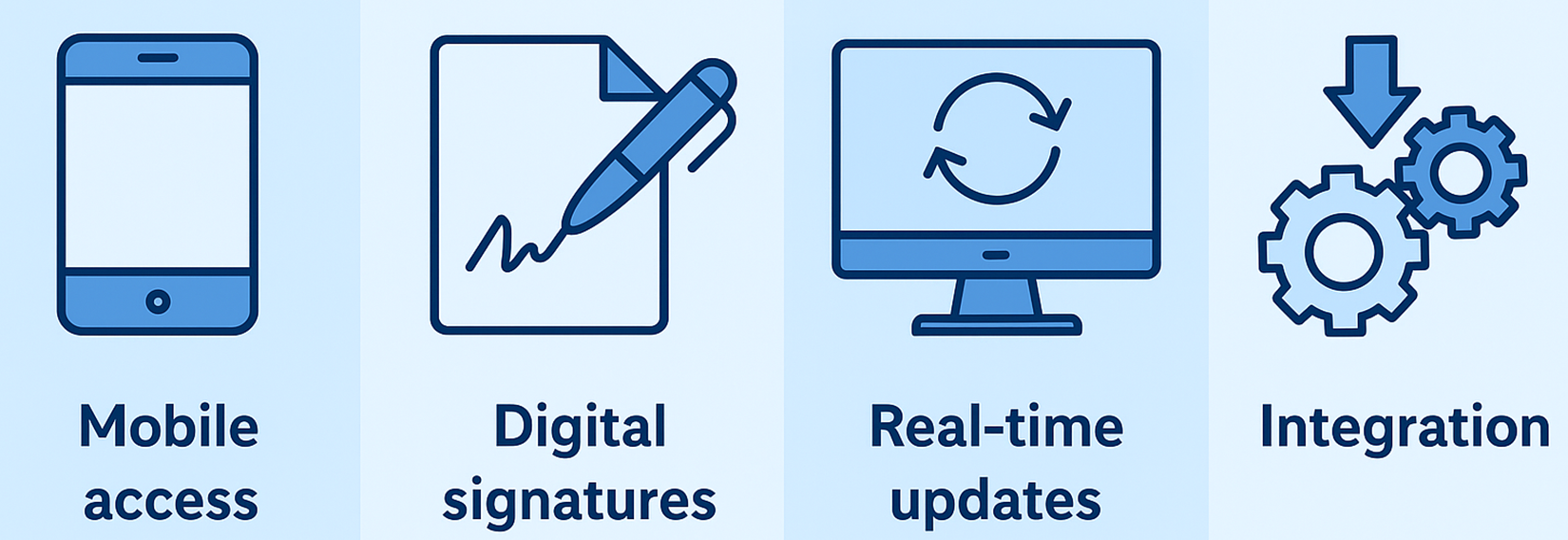
- Mobile access: Workers can view SWMS on smartphones or tablets.
- Digital signatures: Quick sign-off to confirm understanding.
- Real-time updates: Changes can be communicated instantly.
- Integration: SWMS linked with incident reporting, inspections, and training records.
These solutions streamline compliance and improve engagement.
Common Mistakes to Avoid
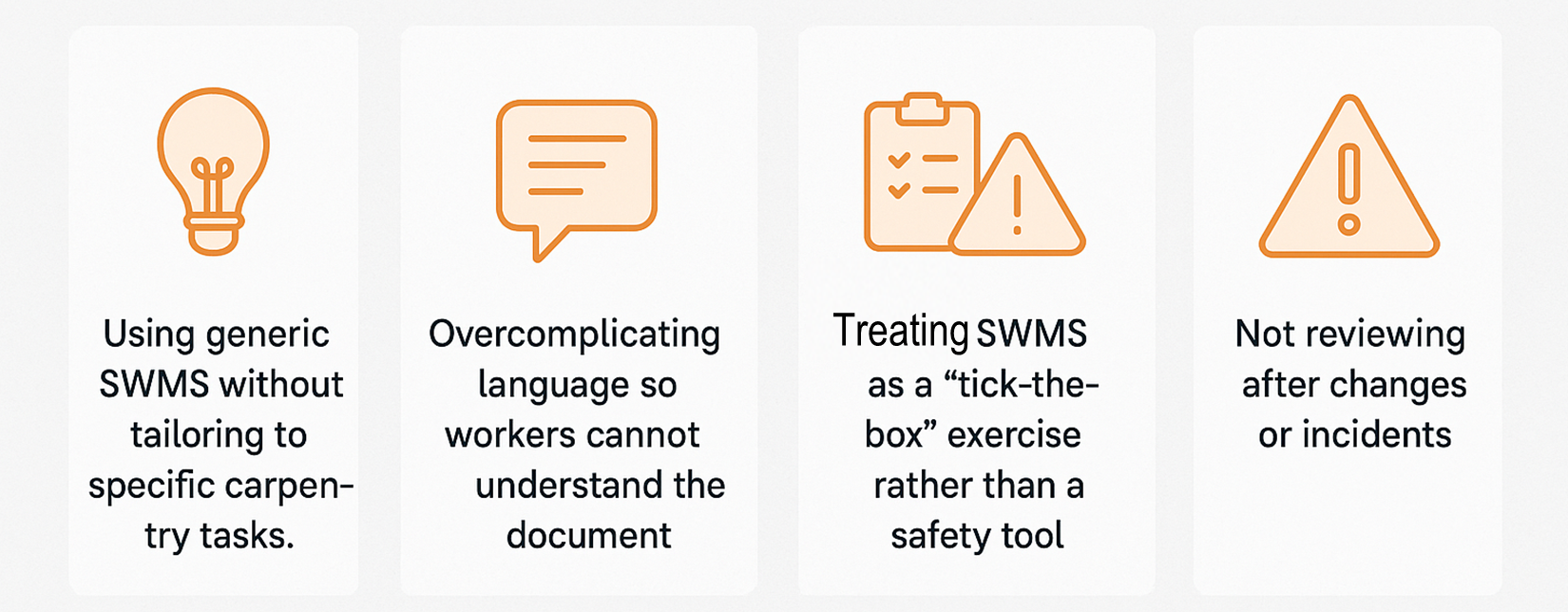
Case Study: Residential Builder in Victoria
A residential building company experienced several near-miss incidents involving carpenters working on roofs. After consultation with their team, the company introduced a revised carpentry swms that included:
- Mandatory use of fall arrest systems.
- Daily pre-start checks of ladders and scaffolds.
- A clear exclusion zone below roof areas.
- Toolbox talks before high-risk tasks.
Following implementation, incident rates decreased, and worker feedback highlighted increased confidence in site safety.
Continuous Improvement in Carpentry Safety
Safety is a journey.
Companies must commit to continuous improvement by:
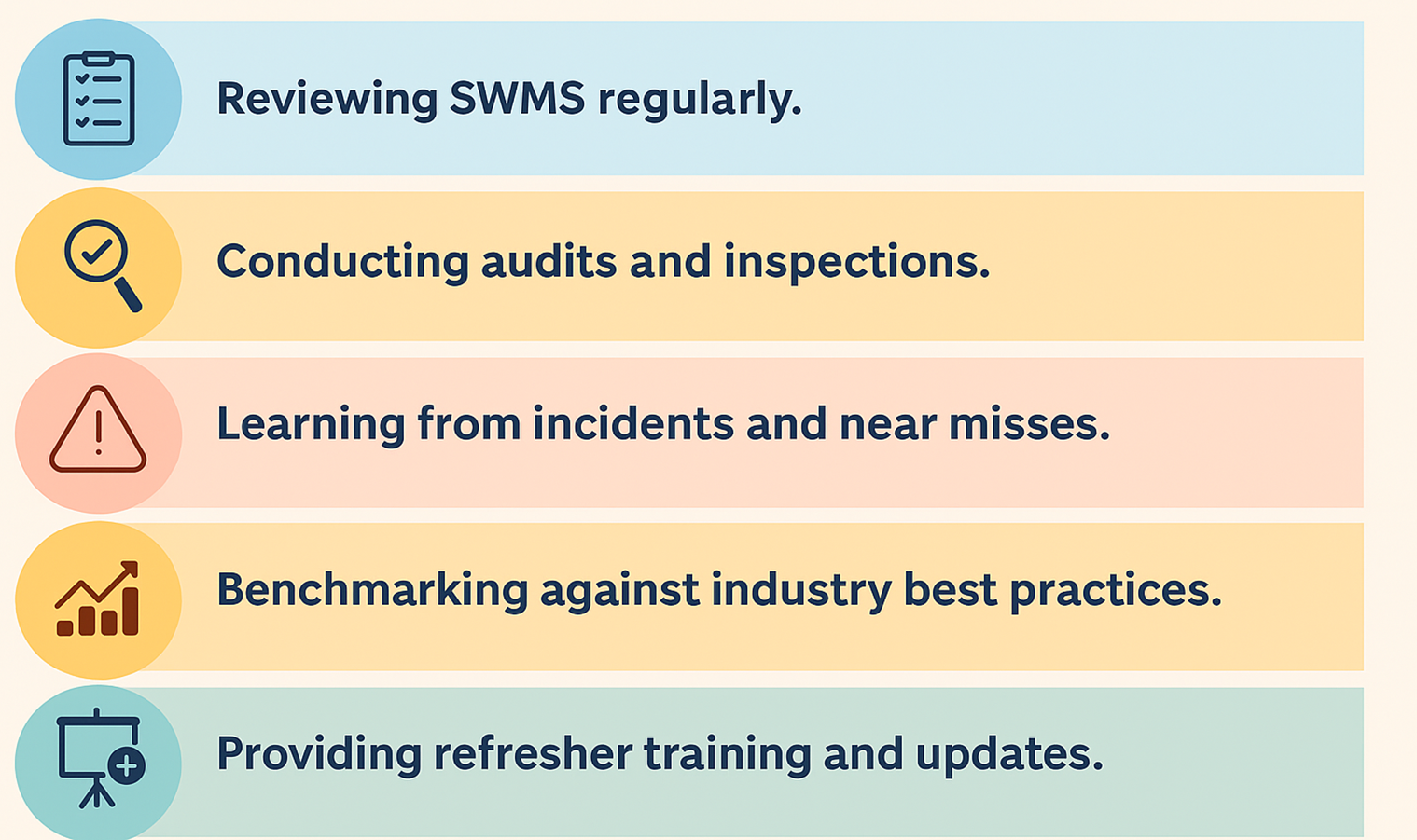
This approach builds a resilient safety culture.
Conclusion
Carpentry is a high-risk trade that requires diligent safety management. A Safe Work Method Statement provides a structured, legally compliant, and practical way to identify hazards, manage risks, and protect workers.
For construction businesses, implementing a robust carpentry SWMS is not just about compliance, it is about safeguarding lives, improving productivity, and building a culture of care. By engaging workers, tailoring documents to real tasks, and embracing technology, companies can ensure their SWMS becomes a living tool that supports safety on every project.
Ultimately, a well-prepared carpentry SWMS helps businesses meet their legal obligations, reduce incidents, and foster safer worksites where carpenters can perform their essential trade with confidence.
Related Content
Join Our Newsletter
Receive expert insights, safety updates, and the latest updates in our services and apps. Stay ahead of workplace safety, compliance, and operational efficiency delivered straight to your inbox.

.png)
.png)
.png)
.png)
.png)
.png)
.png)
.png)
.png)
.png)